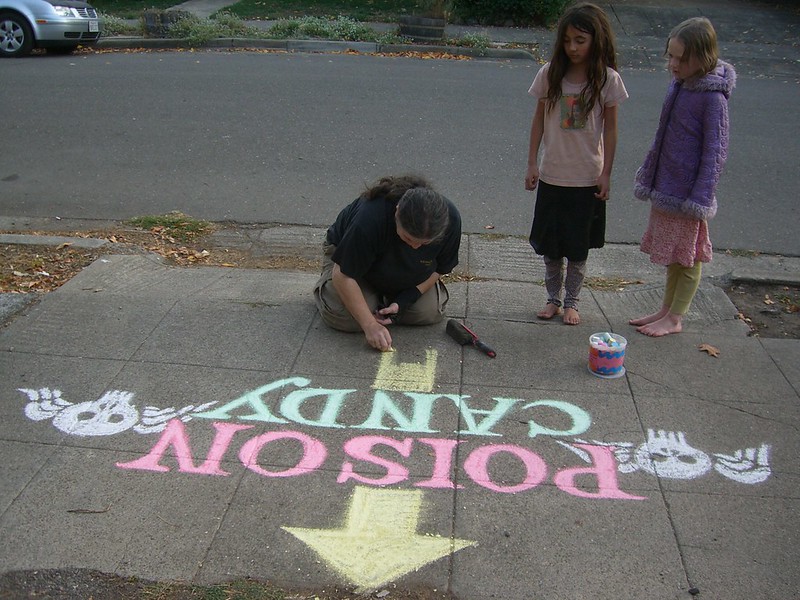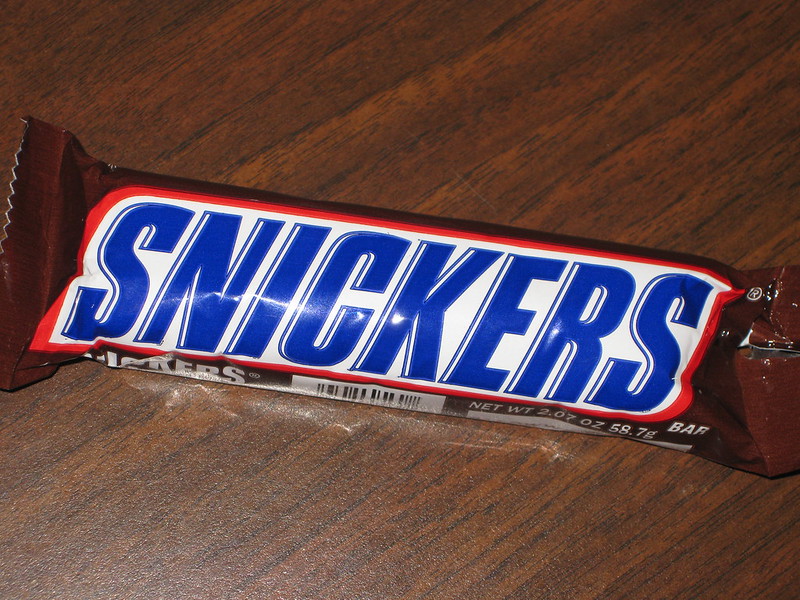Halloween, a night of spooks and thrills, has long been shadowed by the fear of poisoned candy and razor blades concealed within innocent treats. Tales of lethal Halloween snacks have circulated for decades, creating a climate of fear and caution. Are strangers poisoning your kid's Halloween candy? It turns out there are several very real incidents that continue to fuel fears of candy tampering.
How Did The Fear Of Poison Halloween Candy Start?

Trick or treating followed by the ritual of parents checking their children's goodies for tampering is a Halloween tradition for many. Many of us never questioned that it was true that strangers wanted to do us harm by poisoning our candy, and carried the tradition of checking Halloween candy on into adulthood. But what started this fear of Halloween candy tampering? There are several possible starting points for what many believe to be an urban legend.
Wikipedia reports that people claimed to be receiving poisoned candy all the way back to the Industrial Revolution. Back then people were used to only eating good made at home, and were fearful of food items that were mass produced and made by strangers.
Another potential start to the candy fear was an article published in the New York Times in 1970 titled 'Those Treats May Be Tricks' which you can read here. In that article Judy Klemesrud reported on a Halloween safety bulletin put out by the New York State Health Commissioner which said, “Children should not eat any of their collected goodies until they have been carefully examined by an adult. In recent years, pins, razor blades, slivers of glass and poison have appeared in the treats gathered by Children across New York State.”

That article went on to suggest a variety of ways in which Halloween goodies might be tampered with: "Take, for example, that plump red apple that Junior gets from a kindly old woman down the block. It may have a razor blade hidden inside. The chocolate “candy” bar may be a laxative, the bubble gum may be sprinkled with lye, the popcorn balls may be coated with camphor, the candy may turn out to be packets containing sleeping pills."
How Fears Of Poison Halloween Candy Were Fueled

However the fear of Halloween candy tampering started, there were several incidents that fueled that fear and cemented it into the American psyche.
Take for instance, the Chicago Tylenol Murders in 1982. The shocking event, where seven people lost their lives due to cyanide-laced medication, catalyzed a surge in stories about tampered Halloween candy. The media's focus on the Tylenol case amplified the perception of candy tampering, even though the incidents were unrelated.

Then there are the notorious myth of razor blades in candy apples, which is more fiction than fact. Reports from 1972 to 1982 revealed that most cases were hoaxes, with children either pranking their parents or seeking attention. The legend of razor blades in apples grew out of a series of false claims, adding complexity to the narrative.
A sociologist named Joel Best ended up looking into Halloween candy tampering and found that between 1958 and 1983, there were fewer than 90 instances of legitimate candy tampering. Most cases were not acts of malice but rather attempts to garner attention or initiate lawsuits. False claims inspired disturbing incidents, such as the infamous 1974 case where Ronald O’Bryan poisoned Pixy Stix to collect insurance money, resulting in the tragic death of his son, Timothy.
Are There Any Real Incidents Of Strangers Poisoning Halloween Candy?

While the vast majority of Halloween candy remains untouched by nefarious hands, a handful of chilling incidents have punctuated the festive night, serving as cautionary tales that continue to fuel the perennial fear of tampered with treats.
In Oregon, a seemingly innocent night of trick-or-treating took a dark turn when two parents were hospitalized after consuming meth-laced gummy candy. The candies, resembling Sour Patch Kids, appeared fully sealed before being opened, adding an extra layer of deception to the malicious act. Fortunately, the children were spared from ingesting the tainted sweets.

Long Island witnessed an eerie episode in 1964 when a resident, frustrated with trick-or-treaters she deemed to be too old, distributed buttons of arsenic ant poison, dog biscuits, and steel wool pads wrapped in tin foil. The potential lethality of the ant poison prompted an investigation that eventually led to charges of child endangerment.
In 2000, a man was arrested for putting needles into candy bars and handing them out. He was charged with a felony, but was later deemed unfit to stand trial.

In 2013, a woman in Salinas, California, experienced an unexpected trip after reportedly consuming a Snickers bar from her daughter's Halloween haul. The candy was laced with LSD-like substances.

So is Halloween candy tampering fact or fiction? You decide.
As we approach Halloween night, we think it's crucial to acknowledge these cautionary tales without succumbing to undue panic. Parents and guardians should remain vigilant, inspecting candy for any signs of tampering and favoring sealed, commercially packaged treats. While the fear of tampered candy may persist as a scary Halloween story, the reality is that the vast majority of trick-or-treaters will enjoy their sweets without encountering anything more sinister than a sugar-induced stomachache.













